

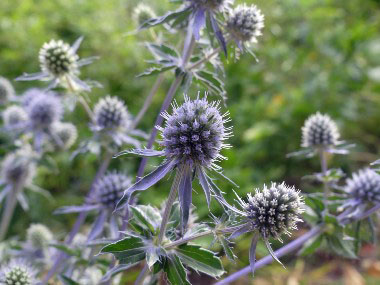
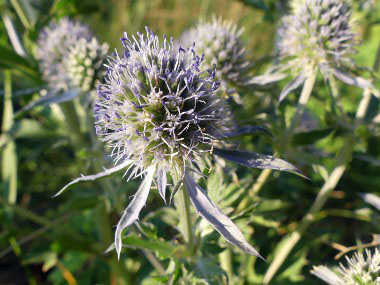
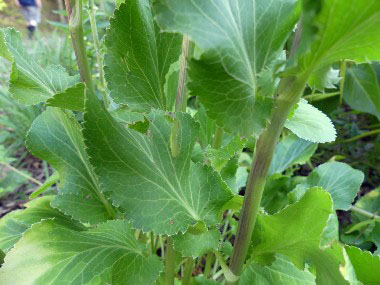
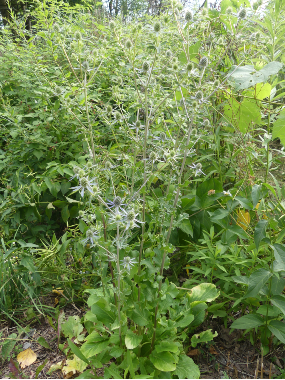
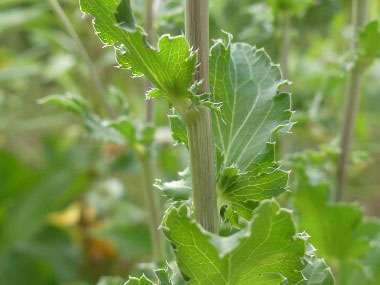
To support our efforts please browse our store (books with health benefits, etc.).
Flat sea holly is a unique plant that is an umbellifer, yet its appearance is not typical of an umbellifer. This plant thrives in dry, sunny spots and the hard structure and the smooth waxy surface of the shoot protects this plant from drying out even in hot weather. The unique colour of the sea holly (anthocyan pigments) protects the plant from the negative effects of overexposure to sun radiation. Although this is a commonly cultivated plant, it also grows in the wild. Flat sea holly is native to Europe and parts of Asia, where it has long been used in traditional herbal medicine.
Distinguishing Features
This perennial is easy to identify due to the bold clusters of steel-blue/lavender, ball-shaped flowers with colorful bracts at the ends of the stems from early summer to early fall.
Flowers
The flat sea holly has an attractive blue, purple/lavender, gray/silver flower. The long-lasting flower head is a spherical-cylindrical umbel that measures about 5cm (2”) across. A narrow, spiky collar of spiny, bracts surround the flower. This flower is usually in bloom from June to September.
 Fields
of Nutrition has medicinal benefits and vitamin/mineral content of Flat Sea Holly.
Fields
of Nutrition has medicinal benefits and vitamin/mineral content of Flat Sea Holly.
Leaves
Leaves are deeply toothed, spiny, and are elliptic to oblong in shape. They are arranged alternately on the stems. The lower, basal leaves are elongated and stalked. The leaf margins are serrated.
Height
This plant grows from 60 cm to 1 metre (2 to 3’) tall.
Habitat
This plant thrives in sunny locations in soils that are well-drained. In dry locations, the stems and bracts become more intense. Flat sea holly grows throughout the U.S. and in several areas in Canada.
Edible Parts
Eryngium species are a rich source of flavonoids. Young shoots and leaves are edible but only in small quantities. Although not confirmed, the roots of this species may be edible.
Other Name
Blue Eryngo.
Winter Survival Food Handbook

PDF Plant Magazines
Types of Wild Food
Geographic Zones Seasons
Disclaimer
EdibleWildFood.com is informational in nature. While we strive to be 100% accurate, it is solely up to the reader to ensure proper plant identification. Some wild plants are poisonous or can have serious adverse health effects.
We are not health professionals, medical doctors, nor are we nutritionists. It is up to the reader to verify nutritional information and health benefits with qualified professionals for all edible plants listed in this web site. Please click here for more information.
Why Edible Wild Food?
- Food costs are rising
- Free, wild food is readily abundant
- Wild food adds nutrition to your diet
- Wild food can help treat various medical conditions





